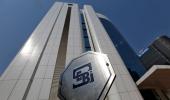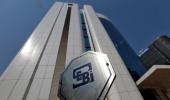The rumour verification process would now be triggered by changes in price or 'material price movements', as the paper defines it.
What this means is that companies would need to verify rumours only if the share price moves significantly.

'The Exchange has sought clarification from Bharat Heavy Electricals Limited with respect to recent news item captioned 'BHEL surges 6 per cent on buzz of winning Rs 19,422 crore order from NLC India'. The response from the Company is attached.
'The Exchange has sought clarification from Vodafone Idea Limited with respect to recent news item captioned 'Elon's Starlink tie-up talks in market pumps Vodafone Idea to the skies in India'.'
These notices are typical examples from the 'Market Rumours' section of the NSE Web site (external link).
They illustrate the way the market rumour verification system works in practice, even though it is not mandatory yet.
The stock exchanges highlight pertinent news items and rumours, match these to the price movements in the relevant stocks, and ask companies for clarifications.
Under the Securities and Exchange Board of India's (Sebi's) Listing Obligations and Disclosure Requirements (LODR) Regulations, 2015, the companies will have to mandatorily respond within 24 hours to clarify the situation once the system comes into effect in a phased manner from February.
The exchanges will then post their response on the Web site. (In the examples cited above, Vodafone Idea responded within the stipulated time frame.)
In theory, this verification mechanism offers investors a degree of protection from being fooled by rumours, and it enables them to react by buying or selling the stock in response to the clarifications.
In practice, however, Sebi's regulations about verification of market rumours and disclosures of material events are couched in such a way that companies may struggle to comply.
The volume of news and rumours about listed companies is huge. And, Sebi's current definition of a 'material event' that triggers this disclosure or clarification process is broad -- many would even say, unnecessarily broad.
The regulator has now released a consultation paper, which proposes to change the trigger for disclosures and rumour verification.
This was in response to suggestions by the Industry Standards Forum (ISF), an association formed last year at Sebi's behest.
It involves the Confederation of Indian Industry, the Federation of Indian Chambers of Commerce and Industry, the Associated Chambers of Commerce and Industry of India and the stock exchanges.
ISF is handling the rumour verification requirement as a pilot project.
The key to understanding mandatory disclosures under LODR is Section 30, which has multiple clauses listing situations where a company must respond with a disclosure.
These are in addition to 'normal' disclosures, wherein a listed company must present timely audited accounts as well as transcripts of conference calls with analysts, management guidance about future plans, minutes of annual general meetings, board decisions, etc.
Sebi introduced the concept of rumour verification in mid-2023.
The first provision to LODR's Regulation 30(11) -- the rumour verification requirement -- calls on listed entities to verify and confirm, deny or clarify market rumours that are reported in the mainstream media.
The rumour verification requirement becomes applicable to the top 100 listed entities from February 1, 2024, and to the top 250 listed entities from August 1, 2024, according to a Sebi circular dated September 30, 2023.
How it was imagined
When it was conceptualised, the trigger for verification included 'material events'.
The proposed regulations said companies must mandatorily disclose events or information whose value, or expected impact in terms of value, exceeded:
2 per cent of the turnover, as per the last audited consolidated financial statements;
2 per cent of the net worth, as per the last audited consolidated financial statements (except where the net worth is negative);
or 5 per cent of the average of the absolute value of profit or loss after tax, as per the last three audited consolidated financial statements.
Listed entities were also required to make disclosures of material events or information 'as soon as reasonably possible'.
This was no later than 30 minutes from the closure of a board meeting; within 12 hours from the occurrence of an event if it emanated from within the listed entity; or 24 hours from the occurrence of an event or information if it did not emanate from within the listed entity.
There was some degree of subjectivity in that the company had to make a judgement call whether a given event or information would have a quantifiable impact that Sebi would consider material.
There was also more to the disclosure mandate, and some of this walked into grey territory.
A key clause read: 'Agreements to which persons such as shareholders, promoters, promoter group entities, related parties, directors, KMPs and employees of a listed entity or of its holding, subsidiary and associate company are parties are disclosable if they directly, indirectly, actually or potentially: (i) impact the management or control of the listed entity.'
Moreover such disclosures were mandatory even if the company itself was not a party to the agreements.
This could be interpreted to mean that, for example, wills made by large shareholders or any intra-family succession arrangements in the case of family-promoted corporations (which many Indian businesses are) should immediately be disclosed by the company.
Yet, that would imply massive breach of privacy and could result in unnecessary -- and significant -- share price swings.
What would happen if, say, the will of a hale and hearty promoter was put into the public domain decades before that person was likely to retire, or pass away?
One analyst pointed out, tongue-in-cheek, that it could also be stretched to mean 'Page 3' gossip becoming a trigger if, say, two prominent members of business families are rumoured to have a romantic relationship.
Should companies really be forced to disclose such possible 'events' or respond in rumour-verification mode to such situations? Also, how would this really be enforced in practice?
Understandably, India Inc was unhappy with this LODR.
What changes
Sebi's new paper suggests an important shift in the trigger for rumour verification.
Instead of material 'events', the rumour verification process would now be triggered by changes in price or 'material price movements', as the paper defines it.
What this means is that companies would need to verify rumours only if the share price moves significantly.
Price swing as a trigger makes more sense than material events since price is the key variable when it comes to the market value of a listed concern.
The challenges
Sebi's proposal also involves complexity when it is quantified. For instance, how does one define a 'material price movement' for this purpose?
The paper suggests it be benchmarked in percentage terms to movements in the major market index.
For example, if the Nifty is more than 1 per cent up above its closing levels of the previous session at 9.30 am, the material percentage move in a stock priced at less than Rs 100 should be taken as a gain of 5 per cent or more.
For shares priced at above Rs 200, a swing of plus 3 per cent or more would be considered material.
Similarly, for an index drop of minus 1 per cent, a stock priced at less than Rs 100 would have to drop more than 5 per cent for it to be considered significant.
The top 200 stocks (largecaps) are available in the F&O segment and prices are allowed to swing without limit in either direction.
But lower market-cap stocks may behave differently compared to the largecaps and they are placed in a restricted band.
As the system is broadened to cover stocks, which have lower market-cap, the measurement bands may have to be tweaked, or the benchmark index may have to be changed.
For example, the NSE-500 may be a better benchmark for a midcap or smallcap stock.
There are further complications in cases where, for example, rumours of a potential merger, an open offer, a stake sale or the spinoff of a subsidiary are involved.
Let's say, the rumour of an open offer is verified -- the price will swing as investors focus on the stock.
Since an open offer price is defined by the average prices of the prior 60 trading days, the verification itself will inevitably change the open offer price.
Hence Sebi has also introduced the concept of an 'Unaffected Price' (the price before the rumour is verified) to cater to such situations.
This means alterations in the way merger, open offer and stake sale processes work, with implications for the government's disinvestment programme, as well as for private enterprise.
There's a further point to be considered in terms of business confidentiality.
Understandably, corporations attempt to maintain confidentiality when such negotiations are in progress.
This is even true when, for example, a corporation is head-hunting for a new CEO or CXO.
Equally understandably, there are always rumours in the market about such negotiations.
If a listed company is forced to respond to such rumours before a deal is signed, that will again inevitably affect share prices.
A cursory reading of the text of the LODR and suggested changes indicates that a 'no-comment' response might not be legally acceptable.
This presents further food for thought.
Feature Presentation: Aslam Hunani/Rediff.com











 © 2025
© 2025